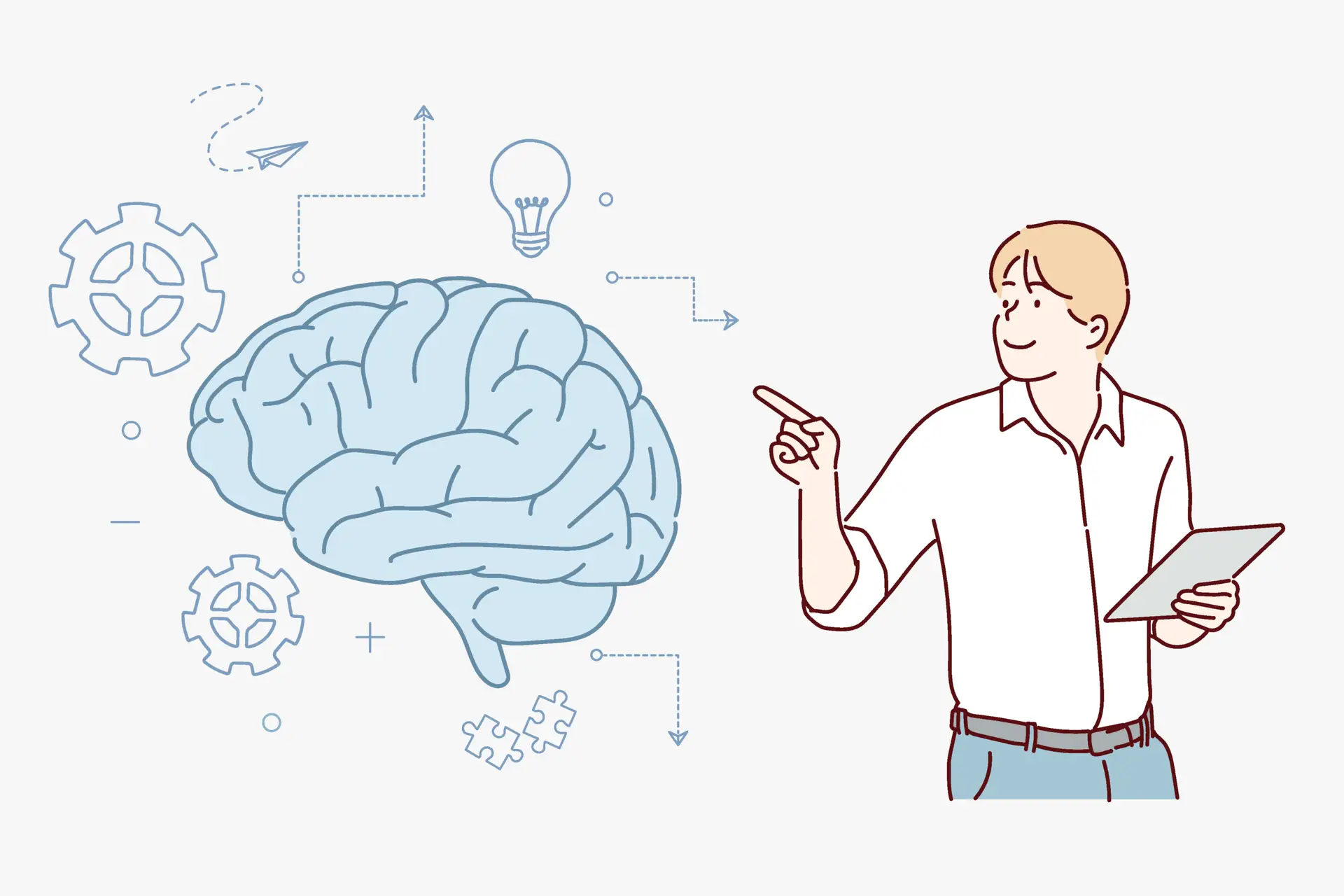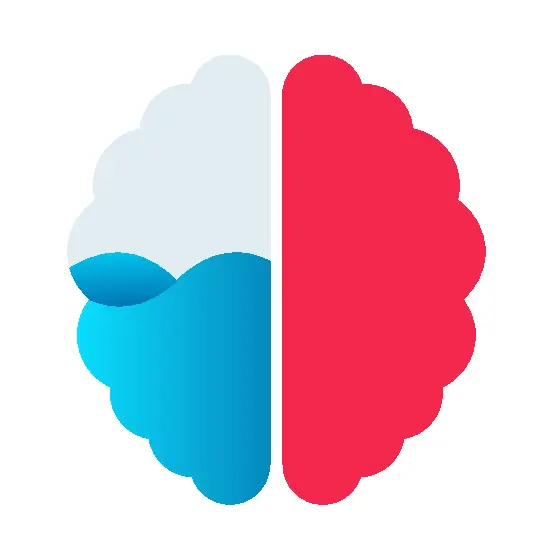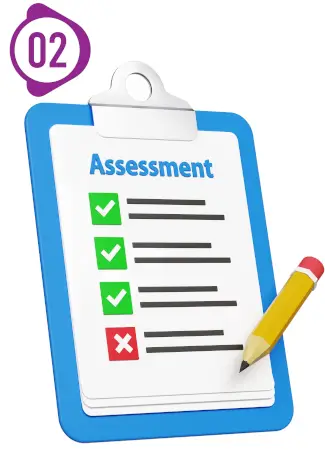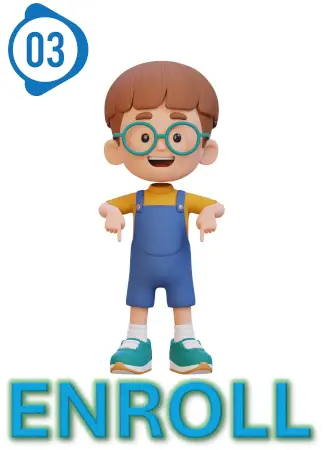Your Child Deserves More Than a Label
They Deserve a Future!
Uncover a revolutionary drug-free solution that
unleashes your child’s unique strengths and abilities
while eradicating the symptoms of their disorder
Every superhero has their weakness, that one thing that will bring them down. With all their strength, skill, and superpowers, their weakness can potentially harm them, leaving us mere mortals in terrible danger.
 Your child is a superhero, with unique powers granted by their disorder. They might be brilliant, have a photographic memory, be able to do complex calculations in their head, be fantastically creative, be a great storyteller, have amazing people and social skills, and so much more. Powers and strengths you want to promote and celebrate.
Your child is a superhero, with unique powers granted by their disorder. They might be brilliant, have a photographic memory, be able to do complex calculations in their head, be fantastically creative, be a great storyteller, have amazing people and social skills, and so much more. Powers and strengths you want to promote and celebrate.
However, with these superpowers come their challenges. The more exceptional their skills, the more pronounced their deficits. They may be hyperactive, struggle to focus or concentrate, have tics, stims, scripting, or echolalia, or face difficulties in reading, writing, math, or speaking. But you, as a parent, are already familiar with these.
The medical industry calls those weaknesses symptoms, and you are generally prescribed medication to get rid of them. Pills that your child must take every day for the rest of their lives. Periodically, your child’s physician will reevaluate and may increase the dosage or change the medication because it stops working.
The issue with medication is that it doesn’t eliminate the symptoms. Instead, it conceals them, making them invisible to you. But they persist, and as the medication wears off, the symptoms resurface.
Of course, there are other treatments you might be prescribed or have tried, and most of them are effective to some degree. All of them, except medication, would be far more effective if the provider understood what was going on in your child’s brain and treated the cause of their disorder and all the other related issues.
Digging Deep
 Research into the brain by numerous individuals like Santiago Ram of the University of Madrid, Roger Sperry of California Institute of Technology, and Paul Broca of the University of Paris, France tells us precisely what’s going on in the brain when we do various things like reading, writing, and speaking. This research shows us how each area of the brain communicates with every other area of the brain.
Research into the brain by numerous individuals like Santiago Ram of the University of Madrid, Roger Sperry of California Institute of Technology, and Paul Broca of the University of Paris, France tells us precisely what’s going on in the brain when we do various things like reading, writing, and speaking. This research shows us how each area of the brain communicates with every other area of the brain.
Dr. Robert Melillo and his colleagues took this research a step further and discovered what’s not happening in the brains of kids with neurological disorders like Autism, ADHD, and Dyslexia. But they didn’t stop there.
They wanted to know why they saw what they saw happening in the brain. Essentially why the brain is not developing as it should, so, they dug deeper.
What they discovered is the cause of most neurological disorders, and that cause is retained primitive or infant reflexes.
The Cause
Primitive reflexes are the reflexes you are born with. They originate in the brainstem and are present to help you make your way through the birth canal and live for the first few months of life. This occurs because the brain of a baby is not developed enough to control the body. As a result, several reflexes are present or should be present at birth.
As a child’s brain and body develop, those reflexes integrate, meaning they become dormant, or they are supposed to become dormant. When the reflexes stick around long after they should be gone, or they were never present to begin with, the result is the developmental issues we know as Autism, ADHD, Dyslexia, OCD, ODD, and many others.
Usually, they stick around because the reflex itself is not used. For example, the Spinal Galant reflex facilitates the hip’s range of motion necessary for birth, rolling over, crawling, and walking. Children who are born via c-section, an ever more common occurrence, usually have the Spinal Galant reflex long past nine months of age when it’s supposed to integrate because they didn’t use the reflex during the birthing process.
It is also possible that some trauma before, during, or after birth caused the reflexes to remain long after they should have been integrated.
For your current children, it’s not important what caused the reflexes to stick around, nor are you to blame. You are doing your best, and that’s what matters.
If the Reflexes Persist, Disorder exists!
In a neurotypical child, primitive reflexes are suppressed by the development of the frontal lobes as a child develops. When they are retained, their presence prevents the brain from developing the way it should, causing what is known as a functional disconnection between the hemispheres of the brain.
Think of it this way: in terms of development, everything happens sequentially. Primitive reflexes precede rolling over, which precedes crawling, which precedes walking. When the reflexes don’t integrate as they should, things begin to happen out of order as parts of the brain that are waiting for their “cue” to come online … like an actor waiting in the wings for their cue that it’s time to go on stage … don’t get the message it’s time to come online.
The result is an imbalance in brain activity. Essentially one hemisphere is overactive and the other underactive. This imbalance in activity is what we know as Autism, ADHD, OCD, ODD, Anxiety, Dyslexia, Dyscalculia, and many other neurological disorders.
The Good News
The good news is that the human brain can change and adapt. This ability, called neuroplasticity, is a complex process that involves the formation of new neural connections, strengthening existing connections, and pruning unused connections. Meaning we can correct the imbalance in activity and, as a result, resolve the symptoms of the disorder. This process offers hope and potential for significant improvement.
It takes time and patience to create change. Essentially, it requires three things:
- Primitive Reflex Integration – Because retained primitive reflexes don’t allow the brain to develop as it should, part of the brain is immature. Integrating the reflexes enables the brain to mature as it should.
- Core Stabilization – movement is key to brain development. It’s a requirement, and a strong core enhances the ability of the nervous system to transmit messages from brain to body and back again. Strengthening and stabilizing the core improves the ability of the brain to properly mature.
- Hemispheric Stimulation – stimulating the weaker hemisphere matures that half of the brain and brings online the abilities of that hemisphere, which then begins to eliminate the symptoms.
None of those things happen by themselves, though you can do them on your own. You can purchase books from Amazon on Primitive Reflex Integration, Improving Core Strength, and Stimulating the Weaker Hemisphere. Once you get them, you can go through those books, follow the directions, do the work, integrate the reflexes, strengthen their core, and stimulate the weaker hemisphere. It just takes time, patience, and work.
The Bad News
If there’s good news, there must be bad news, right? And if you’re one of those people who like the bad news first, I apologize for getting this out of order. Fortunately, the bad news isn’t so bad, because there is hope.
 As I mentioned, the primary issue in people with developmental delays is related to developing the brain’s hemispheres. Specifically, one hemisphere has developed more neuropathways than the other and the two hemispheres are not communicating appropriately.
As I mentioned, the primary issue in people with developmental delays is related to developing the brain’s hemispheres. Specifically, one hemisphere has developed more neuropathways than the other and the two hemispheres are not communicating appropriately.
Parents, caregivers, and educators tend to exacerbate the problem by providing more stimulation of the hemisphere that is more developed to focus on the child’s strengths, which increases the deficit as well.
Unfortunately, correcting the imbalance doesn’t happen naturally or easily.
Worse is that the imbalance may have created several other issues that may not be obvious, such as auditory processing, visual processing, body awareness, and spatial awareness problems.
It’s more than Research
 The work that Dr. Robert Melillo, Dr. Gerry Leisman, and many other world-renowned neuroscientists have done in Functional Neurology is groundbreaking. They’ve proven that Retained Primitive Reflexes are the cause of neurological disorders like Autism, ADHD, and Dyslexia. Their research has also shown that integrating those reflexes and stimulating the weaker hemisphere corrects the imbalance and, effectively, resolves the symptoms of the disorder.
The work that Dr. Robert Melillo, Dr. Gerry Leisman, and many other world-renowned neuroscientists have done in Functional Neurology is groundbreaking. They’ve proven that Retained Primitive Reflexes are the cause of neurological disorders like Autism, ADHD, and Dyslexia. Their research has also shown that integrating those reflexes and stimulating the weaker hemisphere corrects the imbalance and, effectively, resolves the symptoms of the disorder.
More than 100 peer reviewed research papers were published by Dr. Melillo and his colleagues on the various aspects of resolving the symptoms of neurological disorders.
But Dr. Melillo is a clinician who works with people of all ages, from toddlers to adults, developing, refining, and proving his methodology. More than 50,000 patients around the world have benefitted from his work and hundreds of clinicians have been trained using his methods.
NeuroFiT Connections is one of the many clinics worldwide that base what we do on his work. It is the core of our program. We’ve spent the last eight years studying his work, learning directly from him and other world-renowned neuroscientists, and implementing those methods. Over the past eight years, we’ve treated hundreds of kids and quite a few adults.
The Solution
Your child is not just a brain or a body. They are a whole person struggling to be the best version of themselves.
Our approach is to look at all the pieces that make up your kiddo, to discover what is going on in their brain and body, then create a plan to correct what we’ve found. There are four steps to resolving the symptoms of the disorder and get the results you want to see:

It starts with an assessment where we evaluate ten areas of your child’s neurological development using non-invasive processes.
Depending on your child’s capabilities and severity, we will assess:
Dominance: A dominant side should be selected by three years of age. Not selecting a dominant side in terms of their hands, feet, ears, and eyes indicates a problem.
General eye movements: In terms of the brain, the eyes tell a story. We check both slow and fast eye movements as well as convergence of the eyes, peripheral vision, and eye fixation. When the eyes are not tracking correctly, you’ll see problems with balance, reading, sports, coordination, focus, driving, rhythm and timing. Information needs to go in correctly to be appropriately processed.
Primitive Reflexes: All brain growth starts from the bottom up. Retained primitive reflexes, stored in the brainstem, inhibit the ability of the left and right hemispheres to grow correctly. All primitive reflexes are expected to be integrated by two years of age, with some integrating as early as three months of age.
Rhythm & Timing: Rhythm and timing impacts us in all areas of life such as cognition, attention, focus, memory, speech and language, executive functioning, comprehension, as well as motor & sensory skills. We measure Rhythm and timing based on the number of correctly timed responses to stimulus.
Cognition: We use a variety of scientifically validated brain health assessments for Visuospatial Working Memory, Spatial Short-Term Memory, Working Memory, Mental Rotation, Visuospatial Processing, Deductive Reasoning, Planning, Verbal Reasoning, Verbal Short Term Memory, Attention, and Response Inhibition. We don’t give every child every test. We pick and choose which tasks to administer based on the information provided.
Proprioception: Poor proprioception means your child will have difficulty interpreting body positions and movements from the muscles and joints. With poor body awareness comes poor social skills. Poor proprioception can cause several signs and symptoms.
Fine motor skills: Poor fine motor skills result in the inability to perform precise hand and finger movements, manifesting as difficulty with tasks such as writing, drawing, buttoning clothes, or using scissors. Fine motor skills can affect cognitive skills and might impact speech and food choices.
Auditory Processing: An auditory processing deficit directly affects how efficiently the brain interprets and responds to sounds. Auditory processing issues can significantly impact a person’s ability to understand speech, follow instructions, communicate effectively, and can contribute to learning difficulties, behavioral challenges, social anxiety, and even emotional struggle.
Abdominal Core Muscles: Poor musculature results in poor processing in the brain. Abdominal core muscles are the driving force for brain growth and speed of processing. We test abdominal core musculature using the Presidential Standards and normative data collected over 30 years.
Coordination: Coordination is the ability to execute smooth, accurate, controlled motor responses. It involves selecting the right muscle at the right time with proper intensity to achieve appropriate action. Poor coordination can result in injuries and an inability to perform well in sports. More complex and organized movements create a more complex and organized brain. We test coordination using a pattern crawl across the midline.
With the information we gather, we create a report that will tell you precisely what is going on with your child and what it means in terms of the behavior you see.

From the assessment, we produce a plain English report that details everything we found, how each finding relates to the symptoms of your child’s neurological disorder, and what that means.
The report also explains what it takes to correct the cause and remove or reduce the negative behavior you see while retaining your child’s strengths. In addition, the report discusses how neurological change happens, when it happens, and what you can expect as your child progresses through the program.
Finally, we provide up to three options for enrolling your child, complete with time frame and costs.

Each child is unique, and we create a program for each child as unique as they are. Because of this, we only focus on the specific issues that your child has.
The plan involves specific activities to:
- Integrate Retained Primitive Reflexes – As the cause of developmental issues, this is one of the first things we focus on.
- Exercise the Abdominal Core Muscles – Strengthening the core through movement accomplishes two goals. First, it encourages brain development. Second, it enhances communication between the brain and the body.
- Stimulate the Weaker Hemispheric – Using specific gear and specific activities, we stimulate the weaker hemispheres to balance the brain.
- Enhance Rhythm & Timing – Timing is everything in the brain. Using a specialized piece of equipment, we synchronize the activity of the hemispheres to within a few milliseconds.
- Correct Auditory Processing Issues – Our ability to hear and process what we’ve listened to is an essential program component. For those who need it, we use a set of applications designed to correct any auditory processing issues.
- Correct Eye Movement Issues – More than 20/20 vision, we correct convergence, divergence, 3D processing, and eye tracking. These skills are essential in reading, writing, and everyday life.
- Improve Cognition – Because kids with developmental issues tend to miss as much as 25% of the academic instruction they receive because of problems with working memory, reasoning, concentration, and verbal ability, we use an application with a proven track record of enhancing cognitive abilities in those specific areas.
- Correct Proprioception – Our ability to know where we are in space is a crucial sense for coordination and balance. Using specific exercises, we train the brain to develop the habit of creating a map of our body in space.
- Enhance Fine Motor Skills – Along with many developmental disorders, we tend to see weak muscle tone and low fine motor skills. That’s why we include specific activities to improve muscle tone and fine motor skills as children progress through the program.
- Increase Coordination – Just as physical movement encourages brain development, coordinated physical movement creates complex coordinated brain waves.
We also include nutritional support in the form of a diet, a nutrition guide, food substitutions, and brain health approved supplements to make sure that your child gets the proper nutrients to fuel the brain and body – no matter how picky an eater they are.
Enrolling your child in their program starts them on the journey to realizing their full potential. By taking this step, you have changed the trajectory of your child’s life.

Throughout the program, your child will grow and change in ways you never thought possible. The symptoms of their disorder will disappear or diminish to the point where they are no longer an issue.
When your child finishes the program, they will be caught up to their neurotypical peers, but with all the skills and strengths they have now. You won’t need to medicate them or send them to specialized therapy, but you may need to provide tutoring to get them caught up in some areas of academics, as that’s not something we do.
If your child is currently in some other therapy, we do work well with other practitioners, and you’ll find that what other providers are doing is enhanced by the NeuroFiT Connections program.
You’ll also notice that they will continue to change and grow long after the program has ended.
What You WON’T Get
You have expectations; some of them come from the negative experiences you’ve already had. We get that. We’re different. You won’t see:
- Attitude. We’ve been where you are, and we’ve been doing this long enough to know that you’re doing the best job you can with what you have available. We will work with you to make sure you and your family are taken care of.
- High Pressure. No matter how you look at it, this is a big decision. We won’t pressure you to make it. We want you to talk it over with everyone who is affected, ask questions, and make the right decision for everyone involved. Fair warning though, when you get your little one assessed, the next step is an assessment review. We’ve found that it’s best to make that appointment before you leave our office, so we might pressure you to do that. In truth, it’s so we know when we must have the data compiled from the assessment and generate your report.
- Hidden Costs. We’ll tell you what everything will cost and what you’ll get from us. Anything else we offer you will be entirely optional and usually it is because we’ve got a great deal on something that will benefit you.
- A Hard to Read Report. We’ve read the reports others have given our parents and, while we can read them, we have no idea how anyone without a medical degree can read them. The report you get from us, while it may have spelling and grammar issues, will be in plain English.
- Requirements to go anywhere else or do anything else beyond the program. You won’t be referred to anyone else for any part of the program. If there is something we see that you could benefit from, we will make a recommendation for optional treatment. For example, a football player patient of ours complained of back pain in the office. We recommended he see a chiropractor to alleviate that pain.
What You WILL Get
Enrolling one of your children in their NeuroFiT Connections program makes you part of our family. And, being part of that group, you will have many benefits:
- All the Gear your child will need to do the program at home. Remember, one of the program’s requirements is doing some work at home. We’ll provide you with everything you need to do the work at home, including a book by Dr. Robert Melillo.
- Auditory Processing Software. If the assessment reveals that your child needs help with their auditory processing, we’ll make that software available for in-office and at-home use. Ten minutes a day can make a big difference.
- Rhythm & Timing Training. Using a specialized device known as the Interactive Metronome, we synchronize the brain’s hemispheres to enhance internal communication. This device was developed over 30 years ago and is continually refined with millions of data points.
- Training on what to do at home. On your first day, we’ll do the exercises with your child and teach you how to work with them to get them done. We’ll also tell you about each piece of Gear you get, what it does, and how and when to use it.
- Weekly or Monthly Trackers. Depending on the nature of your child’s program, you will have a weekly or monthly tracker, a sheet of paper that gives you step by step instructions on what to do daily. This tracker will change as your child master’s an exercise or integrates a primitive reflex.
- Regular progress checks. Every four weeks or 12 sessions, we’ll re-evaluate your child’s progress, produce a progress report, and make the changes necessary to reflect that progress.
- Change. One thing you’ll see a lot in your child’s program is change. As they integrate the reflexes, you’ll see change. As the weaker hemisphere gets stronger, you’ll see change. You’ll see change as their eyes, ears, coordination, proprioception, and interoception improve.
- Support. No matter what happens with your child, we are here to support you. If they don’t like an exercise, let us know and we will provide another one. If they won’t give up a certain food, let us know and we’ll come up with a substitute. Call us if you need extra help at home, and we’ll set up a virtual session. Remember, you are family, and we take care of family.
- Referrals to vetted people that you can benefit from. These are not people you need to use, but people you might want to use. For example, if you want a night out with friends and need someone who is qualified to look after your children, we’ve got a referral. If you’re having trouble with your back and need a Chiropractor, we’ve got a referral.
- Nutritional Support. The most challenging part of the program is figuring out what foods you and your family eat that may impact them. For example, you may think that apples and citrus are good for your child, but they are foods that can cause inflammation in the brain and body. We provide support to help you determine what foods your child currently eats that are impacting them and what you can do about them.
- Supplements. Vitamins specifically formulated to help promote brain development and gut health. When combined with proper nutrition, these supplements will go a long way in supporting your child’s neurological improvement.
- A Program Guide. A short document that walks you through what we do, how we do it, and what you can expect.
- Personalized Coaching. No matter what your child’s program looks like, it will be personalized with specific exercises and activities. There will also be customized activities and incentives to ensure we are successful when they are in the center.
What are the Next Steps?
You’ve already taken the first step by seeking solutions for your child. Let us help you on this journey to make your child the superhero you’ve always known they are. Together, we can build a brighter future for them—without the need for lifelong medication or other therapies.
The next step is to schedule an assessment for your child. But, like anything else in the health industry, there’s a cost involved. Our assessments are $300 with a $100 deposit due now. We will invoice you for the balance at the assessment review. When you enroll your child, we will credit the entire amount you’ve paid to your child’s program.
As a bonus for scheduling the assessment, we’ll give you a copy of Dr. Robert Melillo’s bestselling book Disconnected Kids while supplies last.
Ready to get started? Click the button below:
What You Need to Know
The challenge with a program like ours, or any program that deals with neurodiversity, is that every child is unique. While your child may have a label like Autism, ADHD, or Dyslexia, they are more than that label. They have strengths and weaknesses, skills and deficits. And no two children are identical. We can’t take the label and tell you how long it will take, how much it will cost to resolve the symptoms disorder, or what the program will look like. That’s why we need an assessment.
What we can do is answer your questions and, hopefully, handle your doubts.
There are plenty of providers in Eastern North Carolina, but none who does exactly what we do in the way we do it. When you work with us, you'll get:
- Training - We not only have completed the course work that some others in the industry have, but we have also trained directly under Dr. Robert Melillo, the leading neuroscientist for developmental issues, and his colleagues. This training amounts to several hundred hours.
- Experience - Your Coach, the person who will actually work with your child, has been doing this exact work for more than eight years and with over one-hundred children.
- Tools - As new tools become available, and those tools are vetted by Dr. Melillo and his colleagues, we fold them into our practice, ensuring that your child gets the best available support. One of those tools is the Red-Light Therapy Laser from Avant with specific protocols for each age and disorder.
- Techniques - As new techniques are tested and vetted, we incorporate those into the practice as well. Not all of those techniques are from Dr. Melillo, as there are other professionals out there that, while they might not understand the brain and developmental issues as they relate to the brain, do understand some of the symptoms we see and have the techniques to correct them.
What is your goal?
If your goal is to learn all of the theoretical science behind what we do without actually doing the work, then we are not the people to help you. If you want a "Traditional Approach" to managing your child's disorder, we can't help you. If you want someone who can provide ongoing services where you can drop your kiddo off every day, we aren't the place for you. If you are looking for medication to give your child to manage their disorder, we are not the place for you.
But if you want to correct the neurological disorder, remove or reduce the symptoms, and get the child you thought you were going to get, then we are your people.
The cost is based on the number of sessions your child requires as well as your situation in life. We do offer discounts for single parents, first responders, veterans, and the like. The average is as low as $167 to $335 a month for 72 months. While we don’t accept insurance, we do offer a variety of discounts and payment options, many interest free.
While the cost of our program may seem high, the cost of raising a child with Autism, ADHD, or Dyslexia is much higher:
• According to MintLine Blog and SafeMinds, the cost of raising a child with Autism is between $24,975 and $87,895 per year.
• According to WebMD, the cost of raising a child with ADHD can run between $2,860 and $18,140 per year.
• Irish Examiner reports that the cost of raising a Dyslexic child runs between $500 and $5,200 per year.
After going through their program, many of the services a child uses will no longer be required, resulting in a cost savings over time.
We offer discounts for First Responders, Active-Duty Military, Veterans, Teachers, Single Parents, Families and Referrals. These discounts can be combined up to 20%. Additionally, we offer an additional discount of 10% for paying the entire balance up front.
We’ve also created a list of ways to pay the balance at low or no interest.
Yes. For each family member after the first, we discount their program an additional 10% in addition to any other discounts.
Yes. Your Health Savings Account (HSA), Flexible Spending Account (FSA) or 529A (ABLE) account can be used to pay for services, even if those services are financed.
NeuroFiT Connections is not your regular services company. Our primary concern is making sure your child gets the help they need. At the same time, we want to make sure that our services are affordable.
- Of course, you can pay for services in full when you schedule your sessions. We take both check and credit card. If you choose to pay in full, we will apply an additional 10% discount on the total.
- An easier, interest-free option is equal payments of a deposit and one payment for each month of service.
- If you have a PayPal account with PayPal Credit, you can make use of PayPal Credit to make the equal payments as indicated above, extending your payment date out by as much as six months.
- If that amount is more than you can manage, you can reach out to our partner bank that offers an interest-free credit card for up to 24 months. Ask us for details of this option.
- For those who are over 59 and a half, you can either borrow from or withdraw from your 401K at a low interest rate, usually less than 10%. Contact your employer for details of how to borrow or withdraw from your 401K.
- If you have life insurance, your Whole Life policy can also provide you with a low interest loan, depending on the cash value of the policy. Your Whole Life provider can tell you more.
- For low interest options, you can also finance through NeuroFiT Connections for 2, 3, 4, 5, or 6 years at an interest rate 8.25% (currently), much lower than credit cards.
When you’ve seen the changes in your child and can appreciate how much becoming a NeuroFiT Kid can improve their lives, you can give the gift of sharing your experience with others. For every child you refer to us that becomes a NeuroFiT kid, we will return the favor with $250 cash for you and a discount of $500 for your referral.
We can’t and won’t guarantee that your child will become Neurotypical after completing their program. This is because your child does not think like most of their peers and will always retain most of the benefits of their particular disorder. We do know that there will be positive change as the result of their participation in the NeuroFiT Connections program.
While we don’t guarantee results, we start with a set of goals that we work to meet. These goals come from the parent, the child, and the Cognitive Coach.
What we can guarantee is that, if you do your part at home, you will see changes ... and relatively quickly. Most, if not all, of the symptoms of their disorder disappear. More importantly, you will see your child meet the reasonable goals that have been set.
While a large majority of ABA practitioners specialize in autism, ABA certification does not require any autism training. ABA-based techniques are often used to teach adaptive behaviors or to diminish behaviors associated with autism, so much that ABA itself is often mistakenly considered to be synonymous with therapy for autism. According to a paper from 2007, it was considered to be an effective "intervention for challenging behaviors" by the American Academy of Pediatrics. A 2018 Cochrane review of five studies that compared treatment vs. control showed that ABA may be effective for some autistic children, but noted that the evidence for this is weak. The effectiveness of ABA therapies for autism may be overall limited by diagnostic severity, age of intervention, and IQ.
Occupational Therapists partner with you and your care team to help you understand how your diagnosis impacts your daily life, set goals, and guide you on your healing journey.
Physical therapy addresses the illnesses or injuries that limit a person's abilities to move and perform functional activities in their daily lives. Physical Therapists use an individual's history and physical examination to arrive at a diagnosis and establish a management plan and, when necessary, incorporate the results of laboratory and imaging studies like X-rays, CT-scan, or MRI findings. Electrodiagnostic testing (e.g., electromyograms and nerve conduction velocity testing) may also be used.
While we have not evaluated other companies that claim they can resolve developmental delays, we can say that few integrate the primitive reflexes that are the cause of the imbalance between the left and right hemispheres of the brain.
To change the brain and correct the imbalance between the hemispheres, it takes three things: integration of primitive reflexes, hemispheric stimulation, and core stabilization. Our program does all three things at the same time. Of those that do work on integrating primitive reflexes, many do not work on all three components at the same time, opting instead to work on one piece at a time.
We are aware that there are no two people who have a developmental delay that are the same. As a result, we personalize our program to each child. Some companies don’t follow this practice, opting instead to put each patient through the same set of steps.
Our Cognitive Coaches are dedicated to being the best they can be at working with those with developmental delays. As a result, they are continually improving their skillset by working with and learning from the world’s best neurologists. Part of the continuing education our coaches go through is Red Light Therapy training. This allows us to stimulate specific areas of the brain to reduce the time a child goes through their program and improve the results.
When your child is caught up, we offer what we call Next Level Training to continue their growth to make them unstoppable.
Over the years, there have been hundreds of research papers focused on developmental delays and what can be done about them. Some concentrate on specific disorders, others are more generic. Many of these papers have been published by Dr. Robert Melillo, whose method, The Melillo Method®, we will use with your child.
These research papers are available on request.
No. Nor do we recommend medication for your child. Being on medication does not preclude the ability of children to go through program either, though we do recommend that your child re-visit their primary care physician to determine if the medication is still required after their program.
We do, however, use supplements specifically designed for neurodiverse kids to aid in digestion and cognitive processing.
Not a special diet, but an elimination diet to look for foods that your child may be sensitive to. Alternatively, you might take them to a nutritionist to determine their specific food sensitivities.
Ironically, the most common food sensitivities involved in developmental delays are those that are very nutritious. These foods cause inflammation in the brain, inhibiting the ability of the brain to grow and activate appropriately.
There is no reason for alarm if you discover that your child is sensitive to healthy food. Like all the other symptoms of developmental delay, the sensitivity will most likely go away once the brain imbalance is corrected, so they may not have to give it up forever. It’s also possible that you will discover that your child does not have food sensitivity. However, you cannot assume this to be the case.
Food sensitivities are not the same as food allergies, they do not produce allergic symptoms, but they produce inflammatory symptoms, which are virtually invisible on the outside. It may only affect behavior, mood, concentration, memory or sleeping and there are rarely obvious outward symptoms although some have eczema, digestive symptoms along with other signs.
Remember, once the neurological issue is corrected, food sensitivities often disappear without any further intervention.
No. A diagnosis is helpful during the assessment process, but it’s just a guide and is, many times, wrong especially when it comes to ADD/ADHD.
The NeuroFiT Connections program is intended to be an in-center program as there is software and equipment the coaches use for cognitive development. While we can make progress without the components we use in-center, the length of the program will be longer. Additionally, the coach needs to make sure that the exercises are performed correctly.
Depending on the need and the severity of the developmental issue, we might offer a hybrid in-center and virtual program. This would have your child coming into the center every four weeks and, optionally, meeting with the coach virtually up to three times. Depending on the age of your child, this option would require the assistance of a parent or guardian to complete. Additionally, we may require additional equipment at home to ensure your child has the best results from their program.
The NeuroFiT Connections program is designed to have your child coming into the center three times a week and doing work at home every day. The actual number of sessions varies based on the results of the assessment. The average number of sessions across all our students is about sixty. The actual number of sessions for you or your child may be different.
When your child begins their program, we schedule a specific time of day for them to come into the center for about an hour three days each week to ensure consistency for the student. This may be Monday, Wednesday and Friday or Tuesday, Thursday, and Saturday.
We skip holidays and planned family vacations. Additionally, we expect your child to do specific exercises at home for no more than 30 minutes each day, usually twice a day. We recommend in the morning before breakfast and in the evening before dinner.
Your cognitive coach will provide a home tracker with a set of exercises that need to be completed at home in thirty minutes or less. The set of exercises may change weekly as your child progresses through their program.
When your child completes their program, they will have integrated all their retained primitive reflexes, strengthened their core, and balanced the hemispheres of brain. Additionally, your student will have met most if not all the goals that have been set forth for them.
More importantly, you will continue to see changes over the weeks and months that follow as your child continues to grow.
Ready to take the next step in your child’s journey?
